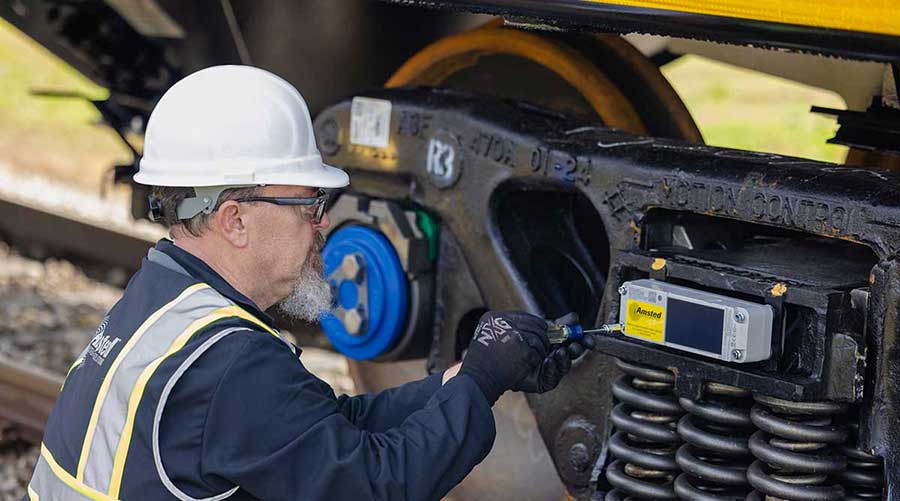Stay updated on news, articles and information for the rail industry
 railPrime
railPrime
December 2018
Rail News: Rail Industry Trends
Outlook 2019: Class I CEOs predict rail traffic growth

Compiled By Jeff Stagl, Managing Editor
Good momentum. Optimism about the healthy economy. A very rosy outlook. Those are some ways the Class I chief executive officers are describing 2018’s mostly sunny business climate or their anticipation for a favorable coming year.
A number of developments are prompting their mainly positive take on extending what has been a relatively prosperous 2018 into and through 2019: the recently forged United States-Mexico-Canada Agreement that’s helped ease some trade-related concerns; tight trucking capacity that’s propelling domestic intermodal traffic; strong carloads of metals, construction materials and chemicals that are boosting industrial products business; and service-performance metrics that are improving as the new year approaches.
But the top execs also stress some caution while they read the tea leaves. Among their concerns: U.S.-China trade relations remain strained, impacting coal and soybean exports, and recruiting skilled trade candidates continues to be difficult — a factor that could slow economic growth.
We contacted the Class I CEOs via email to sort out the positives and negatives when it comes to their best-guess forecasts for business growth and operational performance in 2019. The following comments were provided by Canadian Pacific President and CEO Keith Creel; CSX President and CEO James Foote; Union Pacific Railroad Chairman, President and CEO Lance Fritz; BNSF Railway Co. President and CEO Carl Ice; Kansas City Southern President and CEO Patrick Ottensmeyer; CN President and CEO Jean-Jacques Ruest; and Norfolk Southern Corp. Chairman, President and CEO James Squires.
What’s your take on the potential for volume growth in 2019 after another good year for rail traffic in 2018? Are there certain commodities/business groups you feel pretty good about heading into next year? What, predominantly, will drive business growth in 2019?
Creel: If you look at our third-quarter 2018 results, you’ll see growth across every major line of business CP has. That gives us positive momentum heading into the winter and the start of the new year.
The overall economy isn’t something we can control, but I think we’ve shown definitively that the cost control and disciplined operating principles of the precision scheduled railroading model work in any economy. In other words, we’re prepared to respond to whatever the larger economy, and our customers, send our way.
As far as specific lines of business, we see potash, Canadian grain, energy commodities and intermodal as areas where we could see real strength next year, and I’m excited about the momentum we are building in our merchandise sector.
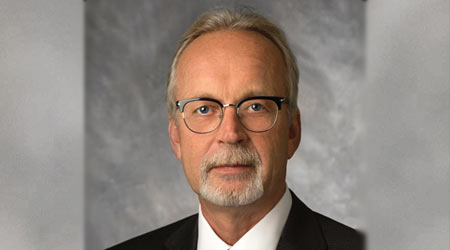
Foote: Both financial and operational performance are outpacing our expectations as we focus on becoming more efficient and providing a superior service product. Clearly, we are doing better than we expected coming into the year. Just months since our investor conference, by almost any measure, we are ahead of where I thought we would be. There’s been strength not just in export coal, but in many business groups — all our business units are growing. The economy is very, very strong.
All of our customers are very optimistic about the outlook, the forest products, pulpboard, paper, lumber, metal — you name it. Based upon where we stand right now, things on a forward-looking basis for export coal into 2019 look pretty good, and that will be what we’ll base our plan on. And we’ll continue to look for ways to become more efficient.
At the beginning of the year, I think everybody expected that export coal was going to trail off at the midpoint of the year. And it has stayed strong and it continues to stay strong.
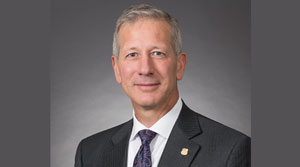
Fritz: Plastics, petroleum and renewable fuels should result in Industrial shipment volume growth for the remainder of 2018. We also anticipate over-the-road conversions will present domestic intermodal and auto parts growth opportunities.
We expect potential coal and sand market challenges for the remainder of the year. Agricultural Products are a question mark, based on export grain market uncertainties due to foreign tariffs. Union Pacific will continue monitoring these potential headwinds as we head into 2019.
We are optimistic the solid economy, consumer confidence and tight truck capacity will favor many of our business segments in 2019. We anticipate positive volume growth, as well as some market challenges.
The United States-Mexico-Canada Agreement (USMCA) is a major development that reduces trade-related concerns as we enter the new year. Maintaining strong trilateral partnerships is critical for Union Pacific, specifically our Mexico business. We move 70 percent of U.S. rail shipments across all six gateways to Mexico.
The USMCA renewed confidence for businesses in nearly every industry. This sets the stage for strong-cross border trade and economic growth for all three countries in 2019.
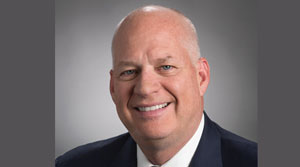
Ice: Throughout 2018, a strong economy brought more traffic to BNSF. Our overall rail volumes were up about 5 percent last year and our growth continued to outpace the rest of the U.S. rail industry reflecting a strong economy.
Domestic intermodal will continue to be one of our strongest growth areas, reflecting the growth of e-commerce, consumer spending and tight truck capacity leading to increased conversion of freight from highway to rail.
Increases in our industrial products business segment reflect broad based industrial growth driven in part by crude oil and other commodities that support domestic drilling activity, as energy prices rose and oil production increased in key areas such as the Bakken and Permian. Population growth and increased manufacturing activity has also led to us hauling higher volumes of construction materials.
Barring outside interventions like tariffs, grain will always be cyclical. Agricultural products will continue being a significant part of our business as our population increases and the world needs more food. Overtime the American farmer has been able to increase how much productivity they’re getting out of every acre, which further emphasizes the potential that grain will always hold for our railroad.
We continue to expect coal volumes to decline over the long term with increased competition from natural gas and renewable energy sources.
Delivering strong service levels that meet our customers’ expectations has always been essential for business growth on our railroad. Cost efficiency is also key to further growth. Good cost efficiency gives you the right to grow.
Our capital investments are one of the ways that we ensure the consistency and reliability of our service for our customers. Since 2000, we have invested more than $60 billion and our network is in the best shape it has ever been. In 2018, we invested another $3.5 billion.
Having the necessary capacity to handle volume growth as it occurs or as new opportunities arise is an essential part of providing strong service levels as well. Our investments enable us to not only handle today’s traffic but also ensures that we are able to grow with our customers in a strengthening economy.

Ottensmeyer: We feel good about the U.S. and Mexican economies. In the U.S., consumer spending is strong and industrial production in many segments is healthy. Related to our business in Mexico, we are pleased that the United States has reached trilateral agreement with Mexico and Canada in the renegotiation of NAFTA under the new United States-Mexico-Canada Agreement (USMCA).
North America is a globally competitive, integrated supply chain. The USMCA continues recognition of this important economic reality by supporting mutually beneficial trade and robust economic growth in North America. KCS looks forward to congressional review of this new agreement to provide much-needed certainty for additional investment in Mexico and commerce across the North American continent.
As we head into 2019, we expect to see volume growth accelerate led by a few key opportunities, including refined products exports to Mexico. This opportunity is driven by strong demand for refined products in Mexico, and additional storage tank infrastructure scheduled to open on our network. The storage tank infrastructure is key to ensuring that our rail network can meet this growing demand while maintaining efficient and fluid operations across our cross-border and Northern Mexico corridors.
Our team strives to provide a safe workplace, efficient operations and excellent customer service. We look forward to working with our customers and supply chain partners to deliver a superior freight transportation product in 2019.

Ruest: We are optimistic for 2019. Our ongoing capacity improvement plan is in place to support a long-term strategy of growth and we have a strong pipeline of opportunities across various segments. We continue to see favorable economic conditions in North America, particularly as it relates to consumer confidence.
In 2018, we invested CA$3.5 billion in our network. More than 80 percent of the major capacity expansion projects are complete, including approximately 56 miles of double track, 10 sidings and five yard projects. This additional capacity combined with a good pipeline of growth opportunities to feed more volume in our network and business on our unique franchise over time is promising.
The Port of Prince Rupert remains a strong growth engine for CN, and not just in the import and export container business. Natural resource exports via Rupert are also expected to be a solid driver, including both thermal coal and metallurgical coal with new and reopening mines in western Canada, as well as a new propane export terminal being built in Rupert.
We see more exports of wood pellets via the West Coast and lumber exports are looking good, as well. We have more inland grain terminals opening on our lines and we also think next year will be a very solid year for crude by rail. Our East Coast operations are also in good shape with the ports of Montreal and Halifax.
Finally, the Canadian economy is also doing fairly well so we are putting a big focus on our domestic intermodal products. With the capacity we are adding with new reach stackers, containers and chassis, we will have the ability to go back in the marketplace to compete more head-to-head with long-haul trucking.
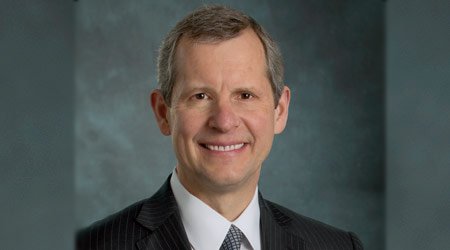
Squires: Norfolk Southern has a very positive outlook for 2019. Our balanced strategy and franchise have positioned us for growth, enabling us to increase traffic volume from new and existing customers while maintaining a sharp focus on improving productivity and operating efficiencies that add capacity.
The economic factors that drive our business — GDP growth, consumer spending and industrial production — currently are forecasted to remain strong and healthy through 2019. Those are positive indicators for our intermodal and merchandise markets, in particular.
Overall, the U.S. economy is expected to expand by 2.8 percent, which is only slightly below the 2.9 percent expected for 2018. While tariffs add uncertainty, the strength of the underlying economy gives us confidence in continued growth. The anecdotal feedback we’re hearing from customers supports an optimistic view.
Intermodal has been one of the fastest-growing freight market segments. Through the third quarter of 2018, NS’ intermodal business volumes have increased for eight consecutive quarters, and we expect that trend to continue. Going into 2019, we expect the truck market to continue to be tight, which is favorable for us, both in terms of truck-to-rail conversions for intermodal and for merchandise markets that are truck competitive.
Currently, we project moderate growth in our merchandise markets, with strength in metals and construction materials, chemicals, and automotive, offset by weakness in other markets. As in past years, coal volumes will be contingent on stockpiles, weather, and natural gas prices. Over the last year, coal stockpiles have been declining and natural gas prices currently are looking more favorable.
Given those factors, we expect increased demand in our utility coal franchise going into the first quarter. With respect to export coal, seaborne prices have been increasing in 2018, and if that trend holds into next year and more coal production comes online, we could see growth in 2019.
What’s your biggest concern in terms of any potential obstacles to business growth in 2019? What other pressing issues are on your mind heading into next year?
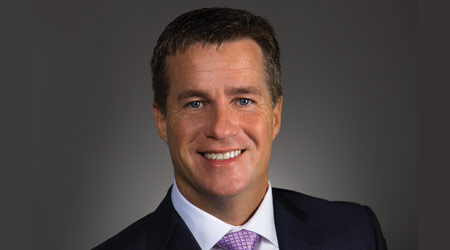
Creel: We focus on what we can control: disciplined execution of our operating model, a commitment to delivering safely and efficiently, and sustainable, profitable growth. We continue to execute our strategic marketing playbooks in the pursuit of growth opportunities that fit with our network and are aligned with what we want to be doing over the long term.
CP will not lose sight of what makes us successful and our market strategies can be successful in delivering growth under any economic backdrop.
The CP team pursues business that plays to our network strengths and creates win-win opportunities with customers. The 13,000-strong CP family is a capable team that will not lose sight of this.
We will hold each other accountable, and use our existing capacity and our investors’ capital in a responsible way. It’s what we owe to investors, to customers and to each other. As we have said repeatedly, it is a great time to be a CP railroader.
With a commitment to the foundations of precision scheduled railroading and disciplined execution, we look for great things in 2019 and beyond.
Foote: CSX is focused on running the railroad better and better every day. There is still ample opportunity to enhance efficiency and improve the reliability of our service, and with that improvement we expect to see more top-line growth. As we improve velocity, as we improve throughput, as we improve all aspects of the railroad, what does it do? It creates capacity. For example, it takes out locomotives. So we’ll continue to take out rail cars.
We’ll continue to free up capacity across the railroad and in the terminals. We will drive more and more efficiency and fluidity in the network.
The safety of our employees is my No. 1 priority. We made some good progress this quarter, and we need to sustain this momentum. The personal injury rate this quarter is encouraging, but we must improve our train accident rate. As I have previously mentioned, we have an initiative underway to drive further improvement.
We had a strong turnout by employees in our recent safety survey, which is a good sign of employees’ involvement. I will continue to prioritize safety above everything else and expect us to make further progress.
Fritz: Solid gross domestic product, record-low unemployment and sensible regulation contributed to a healthy U.S. economy this year. Building on these positive economic developments will require leaders in Washington, D.C., to work together to maintain an environment that strengthens American businesses to compete on the global playing field.
Strained trade relations between the U.S. and China are a continued concern. Mounting tariffs on products from both countries raised prices, created uncertainty and modified trade flows. The trade dispute with China requires addressing deeper issues including theft of intellectual property.
But officials should find common ground to resolve concerns without penalizing each other’s businesses and risking an economic downward spiral. Productive dialogue leading to open and fair trade solutions is critical for both countries in 2019.
U.S. economic growth could slow if companies continue struggling to recruit qualified candidates for skilled labor positions. Congress can supplement the U.S. workforce by passing immigration reform and expediting the legal path into the country, which can take years.
Retraining people displaced by technological advances also can help address the craft professional shortage. Union Pacific recently helped the Local Initiatives Support Corp. expand opportunity centers in Chicago, Houston, Kansas City and Los Angeles, which provide people with training needed to compete for skilled trade job opportunities. We encourage other companies to invest in similar programs working to address the gap for skilled trade professionals.
Momentum behind Unified Plan 2020 positions us and our customers for a successful year. Employees will support growth opportunities while streamlining our network and accelerating operating improvements for a safe and efficient railroad.
An important Unified Plan 2020 component is communicating with customers before making changes. In many cases, our customers work in lock step with us, identifying opportunities to streamline operations. We’ve made significant progress since introducing transportation design changes on our north-south Mid-America corridor.
Union Pacific employees closest to our operations are driving Unified Plan 2020. Since its implementation, we’ve seen increased employee productivity in rail terminals, as well as a 10 percent terminal fluidity improvement. This indicates rail cars are promptly moving from yards to customer facilities. The team also helped reduce active rail car inventory by 10 percent.
Unified Plan 2020 implementation is ahead of schedule on our Mid-America corridor and we expect additional success as we continue simplifying our network.
Ice: Freight-rail traffic is linked to the overall health of the economy. Trade is generally good for the economy, and therefore trade is also good for rail. BNSF’s business depends on trade as more than 40 percent of rail carloads and intermodal units are directly associated with international trade. Trade agreements have been an important element in growing that percentage.
Our agricultural export business through the Pacific Northwest and our West Coast international intermodal business is exposed to risk with China trade representing about 60 percent of imports through the U.S. West Coast. The soybean export market has already been impacted.
That’s not to say reexamining trade agreements is bad. If it results in a strengthened, modernized pact, like the recently concluded United States-Mexico-Canada Agreement (formally known as NAFTA), then it’s a good thing. If it results in a trade war, that’s bad for everyone.
Ottensmeyer: Although we expect 2019 to be a good year, we are watching a few things closely. Free and efficient trade supports continued economic expansion. While we have not seen a significant impact from ongoing trade negotiations, we are mindful of the importance of international trade to strong U.S. and Mexican economies. We will monitor these developments to our business, and continue to voice our support for trade expansion.
Technology and innovation are playing an increasingly important role in our industry. We are very pleased to have achieved full PTC implementation on the required sections of our U.S. network. As we move into 2019, we will work with our rail partners to advance the interoperability of this technology.
Additionally, we are dedicating resources to promoting the application of technology across our network. From the use of drones to monitor and secure our network to applying artificial intelligence to decision making, we are excited about the increasingly important role that technology will play in optimizing network performance.
I am excited about this company’s future. Our values and culture embrace safety, customer focus, communication, teamwork, innovation and diversity. Our employees are fully dedicated to this culture, our network is strong and we look forward to delivering a strong customer experience in 2019.
Ruest: We’re focused on outperforming the economy. As many know, we are a derived service provider and the market right now is very strong. We are investing in the business, building our safety culture and bringing a pragmatic focus to the deployment of technology in our operation.
We are assessing our team to place the right people with the right skills in the right jobs, all to drive our agenda forward with a nimble and transformative team. CN is a supply chain service company with rail as a central component of everything we do to be a growth company.
Squires: Norfolk Southern is in the process of developing and implementing a new operating plan that will change how we operate our local serving yards and terminals, and how we run trains.
Our ultimate aim is to provide more consistent, cost-efficient service, and we are determined to achieve this while minimizing service disruptions. We will be working closely with individual customers to ensure that we can take advantage of growth opportunities as we implement the plan.
A key focus of the plan is asset utilization, specifically working with customers to both right-size assets and to turn assets as quickly as possible. While the goal is to provide a more consistent service product, improving asset efficiency will give us capacity to grow and offer opportunities for gains in labor and network productivity.
We are committed to running a more efficient, customer-focused railroad, and we plan to work with customers to make proactive changes in a staged approach to minimize service disruptions.
We will strive to sustain our current business levels and capture new opportunities in an economic environment that has been conducive to growth.
Email questions or comments to jeff.stagl@tradepress.com.


 2025 MOW Spending Report: Passenger-rail programs
2025 MOW Spending Report: Passenger-rail programs
 Gardner steps down as Amtrak CEO
Gardner steps down as Amtrak CEO
 Guest comment: Oliver Wyman’s David Hunt
Guest comment: Oliver Wyman’s David Hunt
 Women of Influence in Rail eBook
Women of Influence in Rail eBook






